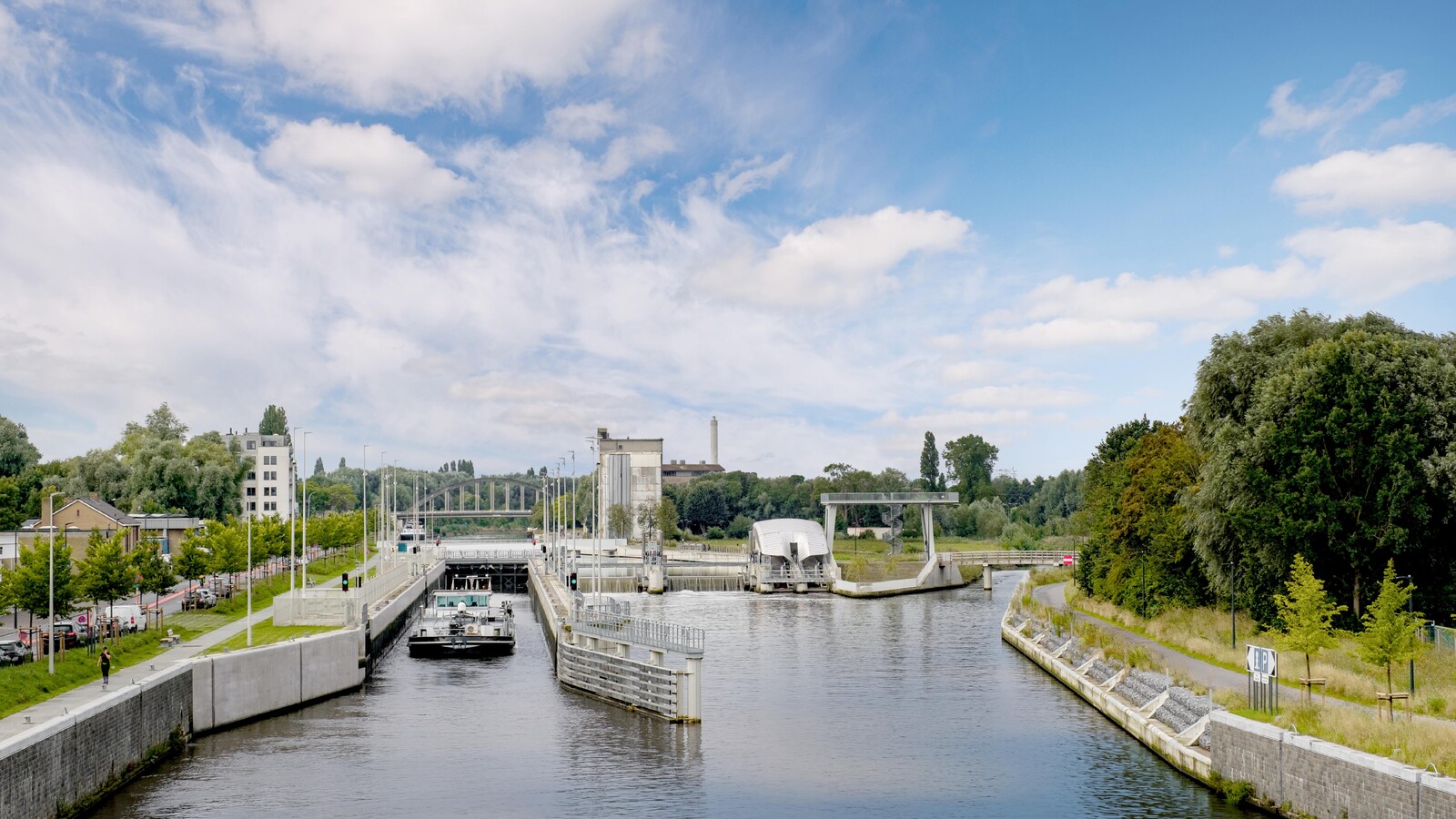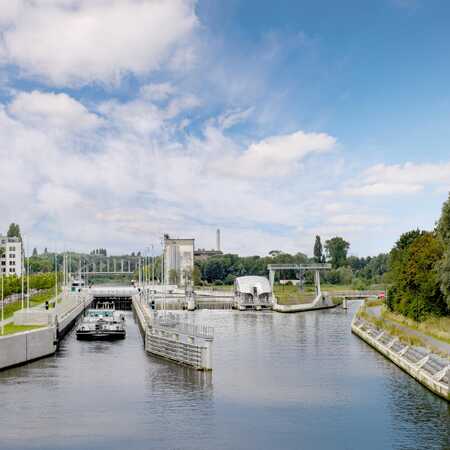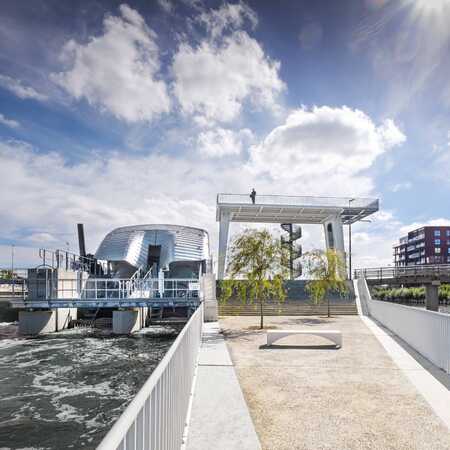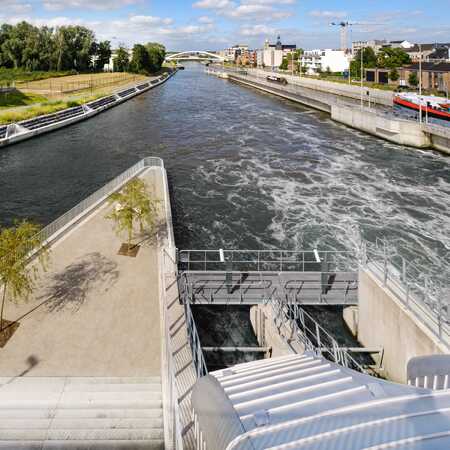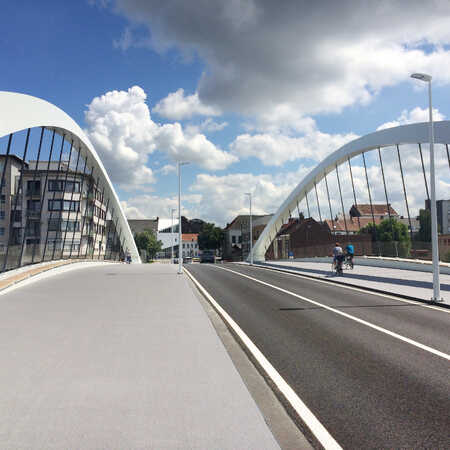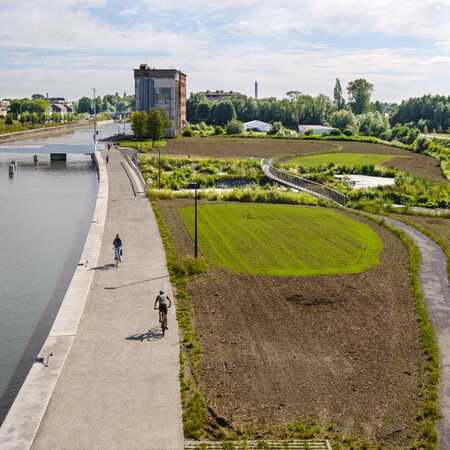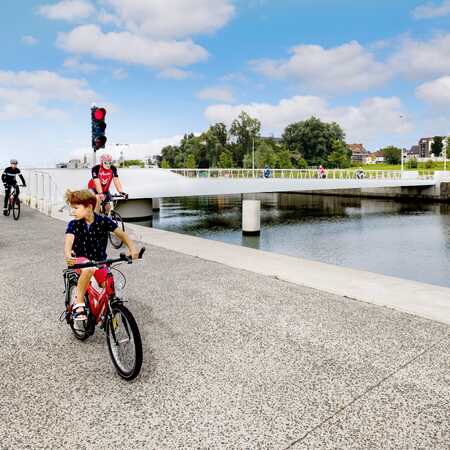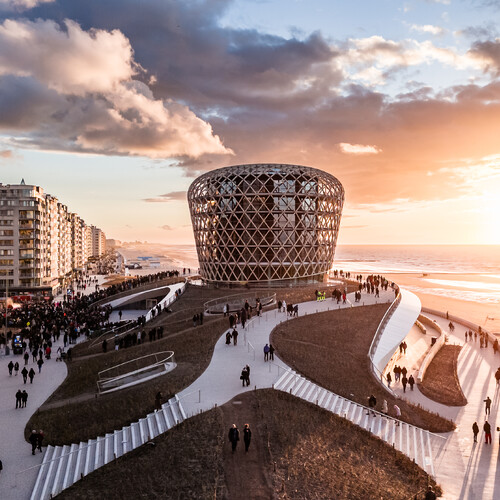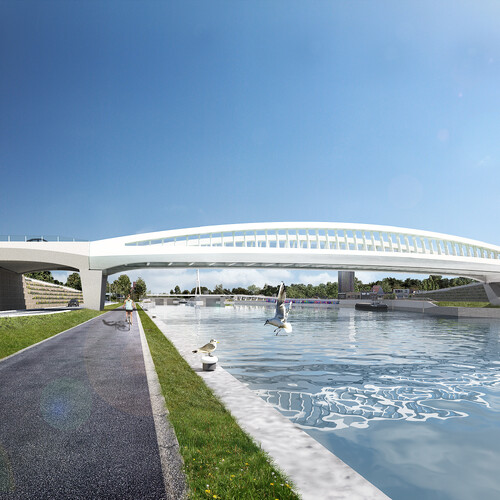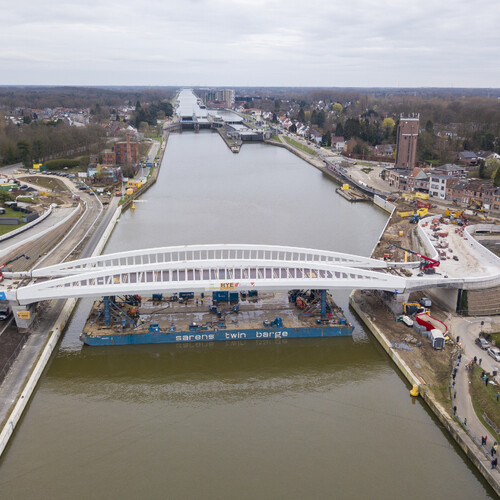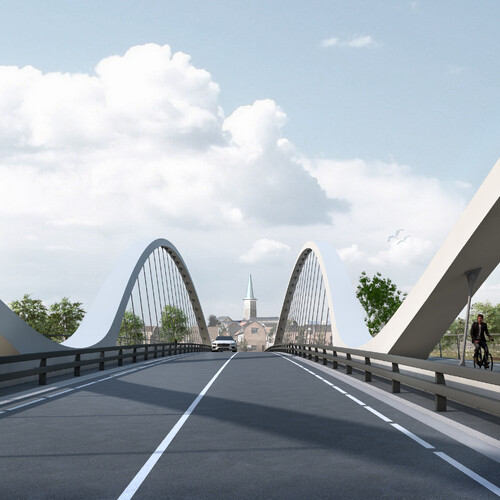A new lock
Flowing from France towards the Schelde near Gent, the river Leie encounters less and less drop beyond Kortrijk, shaping the characteristic Flemish landscape with its cities and villages along its wooded, meandering banks through the centuries. In the last twenty years the river has been straightened and deepened in many places to enable larger ships to reach Rijsel. As part of the project to establish an inland shipping connection for the largest ships from the river Schelde to the Seine near Paris, a new and bigger lock in Harelbeke has been built.
To restore the relationship with the river
In collaboration with landscape architect Bureau Bas Smets, the architectural studio ZJA signed for the design of the new situation, in which the necessity of a new lock offered the opportunity to revitalize the relationship between Harelbeke and the Leie. At this site we also find one of those obsolete meanders of the Leie, now dammed off. The water enclosed a small neglected island with old factory buildings and water mills. In Harelbeke, across the river, asphalt and parking lots stretched right to the river, fenced off with steel crash barriers. All the quays were high and hard. People lived here with their back to the river.
In the new situation the dam has disappeared, and a bridge, the Banmolensbridge has been built. This, and the ecological recuperation of the re-opened meander of the Leie with its green banks allows the Molen island to be re-developed into a green space to live and play. In the design by ZJA the industrial heritage receives a public function to draw visitors. Both banks of the river will be transformed into pleasant environments to linger by introducing green patches, terraces and steps.
Elegant bridges
In the master plan for the Molen island a flat and easy bicycle path connection has been designed, in a straight line from the new Molenwijk neighbourhood on the westbank, via the Molen island all the way to the city centre of Harelbeke on the east banks. This includes the design of two bicycle - and pedestrian bridges. Across the river is a slender, light coloured bridge, that will open by turning sideways when needed. It is a magnificent sight to see the long deck of the bridge, supported by the partly hidden contra weight to move across the water; the extended arm of a dancer making a pirouette. Across the arm of the Leie behind the island is a shorter drawbridge. The island itself will offer a park like environment, with a path crossing the so called ‘stairs for fish’ giving fish the opportunity to pass the lock and the pumping engine unharmed. At the tip of the island a terrace with multiple levels offers a view of the activities at the lock and the surrounding landscape. According to the master plan, a marina can be built at the heart of the Molen island in the future.
The Hogebrug across the Leie is a bridge with an arch designed to be as low and short as possible, and a deck that gradually widens in the middle. The steel girders are painted in soft papyrus white. With its wide pedestrian paths, transparent railing and wooden benches on both sides halfway, it is a pleasant spot to linger with good weather and overlook the river. The underside of the bridge is designed with care to be friendly and well lit, giving pedestrians and cyclists passing underneath a sense of safety at night.
Facing the Leie
In this design the new lock and the pumping engine with the Archimedean screw next to it are both part of the river landscape. As far as safety allows the space around this complex is accessible to pedestrians, to better experience life on the river and the locking in and out of the ships. Custom designed fences ensure their safety. The new lock is a vast nautical improvement which will give inland shipping an economical impulse, and also offered the opportunity to turn Harelbeke and its residents with their faces towards the river once again, so they can enjoy the cultural history, the recovering natural environment and the beauty of the Flemish landscape. When your livelihood depends on the river, needs to also experience, admire and cherish her and this all is what the new situation in Harelbeke offers in abundance.
Awards
Winner: Popular choice award of the Publica Award 2020
Nomination: Jury award of the Publica Award 2020
Architect: ZJA
Client: De Vlaamse Waterweg
Principal: THV Leieland (Jan De Nul, Herbosch-Kiere, Engie Fabricom and Aelterman bvba)
Contractor: Herbosch –Kiere
Landscape architect: Bureau Bas Smets
Technical design: SBE
Year: 2020
Project: #666
Photographs: Kattoo Hillewaere
